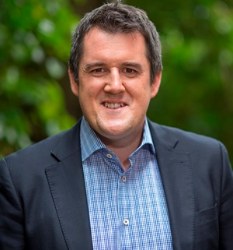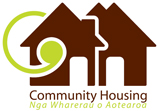Safer. Healthier. Together
Safer. Healthier. Together
A challenge to WorkSafe and the Accident Compensation Corporation
The ACC action plan,
2016 to 2019, provides little to no evidence of how key
indicators related to the reduction of work related serious
harm or deaths can or should be achieved as
referenced.
• Psycho-social Risks – Bullying,
Excessive workload, Lack of autonomy
• Health-related
Safety Risks – Fatigue, stress or mental distraction,
alcohol/drugs consumption (addictions) (page 11)
To
achieve its stated objectives WorkSafe and ACC need to
prioritise an action plan of implementation strategies
related to these identified areas.
Evidence to date
suggests that these focus areas are neglected.
The
Psycho-social Risks and Health-related Safety Risks happen
across all sectors and at best accounts for an estimated
only, 100 - 200 deaths a year and serious harm to 1 in 5
workers at some point in their lives.
Page eleven of the
‘Action Plan’ work related health risks are
identified.(but not limited to)
The Focus Areas that need
implementation action:
• Focus 5 – ‘Sectors’- all
5 areas identified have the issues as listed
above.
• Focus 4 – ‘Cross cutting’ – fails to
identify any of the cross-sectorial risks identified
above.
• Focus 3 – ‘System change’ (1) Education
and awareness and (3) enabling have yet to be actioned in
any meaningful way.
• Focus 2 – ‘Key focus’ –
there is little or no demonstration of action in these
areas.
I acknowledge that I have a potential conflict of
interest in challenging these two organisations, as the
Founder of a Psychological First Aid program specifically
designed to meet at least a part of the stated
objectives.
However it was during the development of the
program, which enabled a focused, in-depth understanding of
the key issues.
To gain an insight, many people have
undertaken studies and produced compelling articles that
clearly define the problems.
However the information
that you would expect to find related to New Zealand,
provided by the key player, the Ministry of Health, provide
incomplete or confusing data.
(health.govt.nz/publication/mental-health-and-addiction-service-use-2015-16).
By their own admission
• Under-reporting of
data
• Data quality and interpretation
notes
• Coding changes may cause artificial variance
and trends
• Data in these tables is not directly
comparable to data in other reports
Not included.
• The provision of primary mental health care, such as
care provided by general practitioners
• Secondary
mental health services funded by other government
departments e.g. funded by the Ministry of Social
Development
• Problem gambling
• People with a
mental illness who do not access services
I have also followed and commented of WorkSafe NZ’s lack of action to Bullying related serious harm reports. The fact remains, WorkSafe have not undertaken any investigations related to the increasing Bulling issue. This simply means there is no evidential basis to help determine what is or isn’t workplace bullying.
Requests to discuss early intervention
strategies with either WorkSafe or ACC have proven
fruitless.
Discussions I have had with local
organisations such as ‘Employers Associations’ and
Chamber of Commerce’ have provided positive feedback, but
suggest that WorkSafe and ACC could do more to promote early
intervention strategies (“much like physical first
aid”).
Providers of Psychological First Aid programs
report increasing interest and growing participation.
To
meet the objections noted in the ACC action plan programs
need to focus on
• ALL staff members
• Focused on
the “focus areas”
For employers, workers and general
public the program needs to address
• Stigma and
discrimination
• Needs to accessible, (time wise and
location)
• Affordable
• “The elephants in the
room”
• Tailored to the participant’s
• Is
related to NZ mental health service
provisions/accessibility
• Utilises everyday
language
Some alarming statistics for New
Zealand
• 668 people took their own lives 2017/18 –
the forth-consecutive yearly rise.
• WorkSafe NZ has
failed to investigate potential Bullying related
deaths.
• Its almost 3 to 1 males/females suicide
deaths.
• Farmers (male) (per capata) have higher rates
that other sectors.
• Finance sector has significant
rates of psychological ill health (data is difficult to
gather on this sector).
• I in 5 workers will
experience a significant mental health problem in their
lifetime.
• 142,039 people utilised Secondary (BHB
Hospital based) services 2017/18
• 63,682 people
utilised Non-government Organisations (NGO)
services.
“Decades of not talking about mental health have not worked. By this I mean there has been a lot of focus on talking to people, but little to no talking with people.”
For any of the targets to be meet, both organisations must engage in implementation strategies that are accessible and easily understood by the whole community.
Graham ROPER


 Gordon Campbell: On bird flu, AUKUS entry fees and Cindy Lee
Gordon Campbell: On bird flu, AUKUS entry fees and Cindy Lee Labour Party: Penny Drops – But What About Seymour And Peters?
Labour Party: Penny Drops – But What About Seymour And Peters? Government: PM Announces Changes To Portfolios
Government: PM Announces Changes To Portfolios Family First: Just 1 In 6 Oppose ‘Three Strikes’ - Poll
Family First: Just 1 In 6 Oppose ‘Three Strikes’ - Poll Labour Party: Budget Blunder Shows Nicola Willis Could Cut Recovery Funding
Labour Party: Budget Blunder Shows Nicola Willis Could Cut Recovery Funding  Government: Urgent Changes To System Through First RMA Amendment Bill
Government: Urgent Changes To System Through First RMA Amendment Bill Peace Movement Aotearoa: Global Military Spending Increase Threatens Humanity And The Planet
Peace Movement Aotearoa: Global Military Spending Increase Threatens Humanity And The Planet


